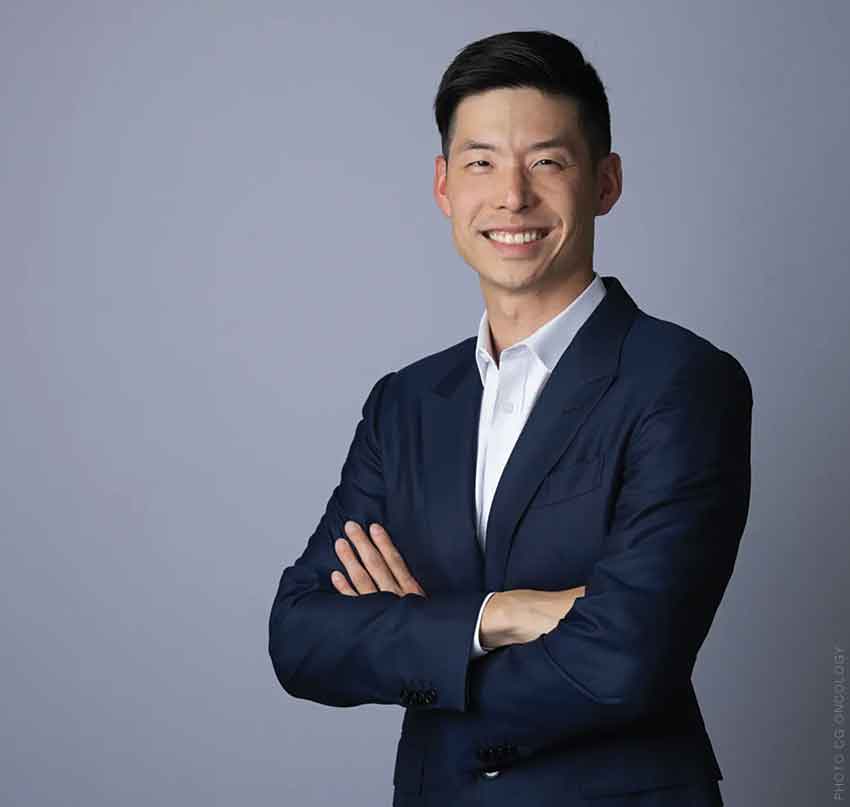
The head of a clinical biopharmaceutical company may be on the cusp of a bladder cancer treatment breakthrough.
Each year, more than 80,000 people in the US are diagnosed with bladder cancer. About 75 percent of these cases are non-muscle-invasive bladder cancer (NMIBC), which means the cancer is only found in the tissue that lines the inner bladder and has not invaded the surrounding bladder muscle, making it easier to treat. The five-year survival rate for these patients is relatively high if the cancer is detected and treated early.
There’s just one problem. One of the most effective treatments for the most aggressive types of NMIBC is a drug called BCG that has been in an acute shortage for more than a decade. BCG is short for Bacillus Calmette-Guérin, a bacterium that was originally used to treat tuberculosis and became the frontline treatment for bladder cancer in the 1970s due to its high response rate and low cost. But BCG is challenging to produce and generates low profits, which has caused several manufacturers to exit the market. Today there is only a single pharmaceutical company in the United States producing this critical drug and each year nearly 10,000 bladder cancer patients in need of BCG are unable to access this life-saving treatment.
The good news is that after more than a decade of effort Arthur Kuan C’12 is closing in on a solution. CG Oncology, the company he runs as CEO, is in the final stages of its third clinical trial for a new approach to treating NMIBC that could save the lives of thousands of patients each year who either can’t access BCG or don’t respond to the treatment. The solution, like BCG, is based in biology. But instead of using bacteria to kill bladder cancer, Kuan and his team have enlisted the help of genetically modified viruses, an approach known as oncolytic immunotherapy.
“One of the biggest challenges with bladder cancer is that it keeps recurring and any treatment you put inside the bladder will be urinated out within a few hours,” Kuan says. “But with an infectious agent like a virus it naturally wants to infect these tissue cells—so it can stay in there for a long period of time.”
Cancer immunotherapy is an approach to treatment developed in the early 1990s that works by inducing the frontline soldiers in the body’s immune system—a type of white blood cell called T-cells—to selectively attack cancer cells. Over the past three decades, it’s proven to be remarkably effective for treating a broad range of cancers and in 2018 two scientists involved in its discovery received a Nobel prize for their work. But the rise of immunotherapy also revealed a surprising capability in cancer to adapt and evade attacks from the body’s immune system. As the body ramps up its attack on cancer cells, the tumors adapt by changing characteristics of its phenotype that the T-cells use to identify and attack them. It’s as if the cancer develops a cloaking mechanism that makes it invisible to the body’s immune system.
Oncolytic immunotherapy is a relatively new approach to cancer treatment that was developed to sidestep cancer’s adaptive response. It works by genetically altering adenoviruses—a family of viruses that can cause illnesses such as colds, sore throat, bronchitis, and pneumonia—so that they selectively hijack the cellular machinery of cancer cells and turn them into virus factories. As the viruses rapidly replicate in the cancer cells, they eventually cause the cancer cell to burst open, destroying it and also exposing other nearby cancer cells to the swarm of cancer-killing viruses.
Oncolytic immunotherapy has shown promise in clinical trials for a broad range of cancers. But so far only a single viral immunotherapy for cancer has been approved by the FDA, which underscores how hard it is to bring a new cancer treatment to patients. It can often take up to a decade and cost hundreds of millions of dollars to research and develop new treatments and then shepherd them through three clinical trials. In fact, over 90 percent of new cancer treatments tested in phase I trials never make it to market.
Kuan’s entrepreneurial verve and experience in biology are an ideal combination for tackling such a formidable challenge. But if you had told him when he graduated from Penn that within 15 years, he’d be at the helm of the company pioneering one of the biggest breakthroughs in NMIBC treatment in nearly half a century, he wouldn’t have believed you.
It wasn’t for a lack of entrepreneurialism. As a student at Penn, Kuan cofounded a boba shop called Boba Bros and launched the International Genetically Engineered Machines club, which was dedicated to applying engineering principles to biology to explore synthetic biology applications.
But when he left the University with a degree in molecular biology, he decided to dive into the world of venture capital in the life sciences. Kuan spent his first three years after graduating as an investment analyst living in Asia, where his primary directive was helping identify and evaluate promising new biotech startups. It was during this time that Kuan discovered CG Oncology, which at the time had just completed its Phase I clinical trial for its new approach to treating NMIBC. Kuan was intrigued by what the company was doing, but it was only once his father passed away from pancreatic cancer that he decided that working on saving the lives of cancer patients was where he should concentrate all of his energy.
“This isn’t a path I would’ve predicted,” Kuan says. “Investing could have taken me to the end of my career and it’s extremely, extremely challenging to develop a new drug for cancer patients. But what CG was developing was so compelling that when my father passed from pancreatic cancer after receiving chemotherapy with no immunotherapy options, I knew I had to help patients like him who need more options.”
Kuan joined CG Oncology in 2015 as the company’s chief operating officer, a position he held for a year before taking over as CEO. During his time at the helm, Kuan has ushered the company through its Phase II and Phase III clinical trials, which finished enrolling patients in late 2023. Earlier this year, Kuan also took the company public in this year’s largest biotech IPO offering with the company raising $437 million. He expects the money to support the company until it submits its application to bring its treatment to market.
In May, CG Oncology reported initial results from its Phase III trial, which is targeting high-risk NMIBC patients who have received BCG but didn’t respond or whose cancer recurred. Out of the 105 patients included in the results, 75 percent of them—79 participants—saw complete tumor response with minimal adverse side effects from the treatment. “The safety profile is also important for this population, which is generally in the 72- to 75-year-old range, but no one dropped out of this study due to an adverse event,” Kuan says. “Those results are pretty impressive, and we’re really encouraged.”
Kuan expects final data from the Phase III trial to be published by the end of this year. At that point, the company will submit its application to the FDA to sell the treatment. If it’s approved, it may be available to BCG-unresponsive bladder cancer patients as soon as 2026. In the meantime, Kuan and his team at CG Oncology have also launched a Phase III trial for applying its new treatment to bladder cancer patients who have never been treated with BCG. If it’s successful, it could go a long way toward helping the thousands of patients each year who are affected by the ongoing BCG shortage. Kuan is also optimistic that CG Oncology’s approach could one day be adapted to other types of cancer. But for now, he says, it’s important for the company to remain laser focused on the unmet needs of NMIBC patients.
“There are so many stakeholders you have to think about when developing a new drug for cancer and it’s easy to get pulled in so many different directions,” Kuan says. “It’s really important in that case to center yourself and refocus on your true north: helping patients.”
—Daniel Oberhaus




